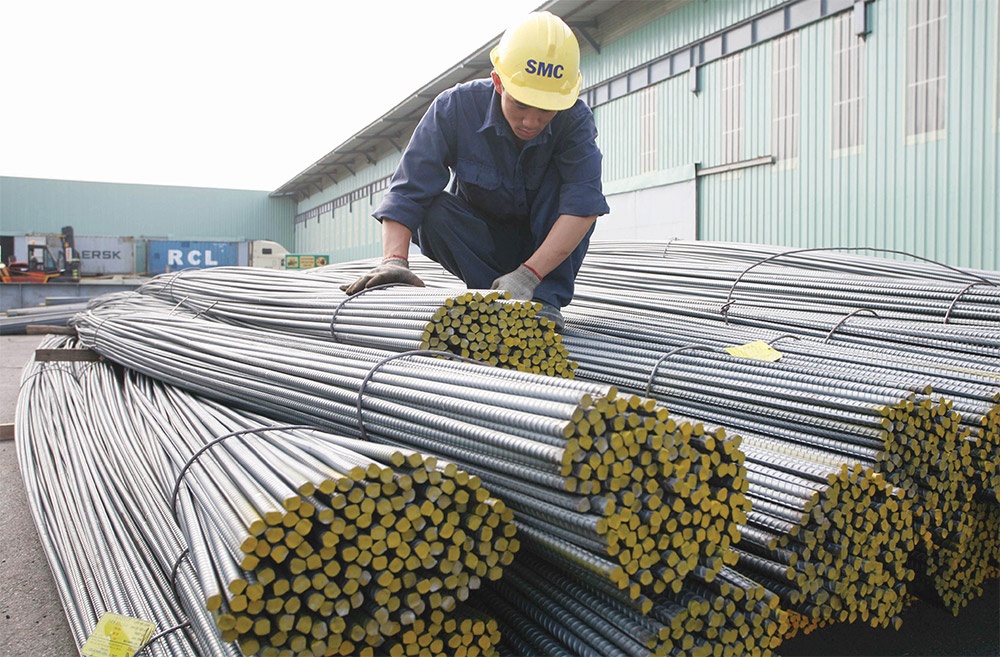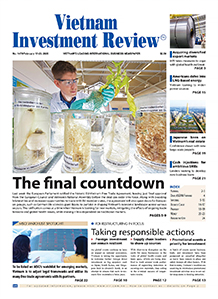Stable businesses the goal as VAT rate expected to stay
 |
| Stable businesses the goal as VAT rate expected to stay |
It is expected that the National Assembly (NA) will maintain the current 8 per cent VAT rate, with official adoption of a resolution on June 17 in Hanoi.
Minister of Finance Nguyen Van Thang told the legislature last week that when it comes to the resolution’s impacts on the state budget revenue estimates and deficit, it is calculated that the rate will result in a decrease of VND39.54 trillion ($1.55 billion) in the second half of 2025, and VND82.2 trillion ($3.29 billion) in the whole of 2026.
“Despite it causing a decline in the state budget revenues, it will have a positive impact on the economy as it will help to fuel production and business activities, thereby creating more revenues for state coffers and pushing economic growth,” Minister Thang stated.
VAT for most items in Vietnam has sat at 8 per cent since 2022. Previously 10 per cent, the rate has brought about positive results for the economy as it faced up to pandemic shutdowns and post-pandemic business recovery struggles.
“This is a very necessary policy that we must be done to help enterprises. Thus, the government sees that for the time being, this policy will be applied until late 2026, and at that time we will once again consider whether the policy is necessary to be lengthened or not,” Minister Thang added.
The latest draft of the resolution, currently scrutinised by the NA, is applied to many groups of goods and services currently enjoying the current VAT rate, including telecommunications, financial activities, banking, securities, insurance, real estate business, metal products, mining products (except coal), and goods and services subject to special consumption tax (except for petrol).
The resolution also expands the beneficiaries of a 2 per cent VAT cut for a number of groups of goods and services currently subject to a common 10 per cent VAT rate.
They consist of many kinds of products and services such as IT, prefabricated metal products, refined oil, chemical products, and imported coal and coal sold out at the stage of trading petrol and oil.
If the resolution is passed, it will be the sixth time the initiative has been carried out since 2022.
It is also in line with Vietnam’s international commitments and aligns with commitments in international treaties to which Vietnam is a member, according to a government report on VAT submitted to the NA.
In 2022, the implementation of the VAT reduction policy provided support worth just over $2 billion for businesses and individuals, contributing to stimulating domestic consumption, with total goods retail and consumer service revenue increasing 19.8 per cent on-year. The following year, similar assistance was valued at $920 million, with total goods retail and consumer service revenue climbing 9.6 per cent on-year.
Last year, the same support came in at $2 billion, with total goods retail and consumer service revenue ascending 9 per cent on-year.
According to the National Statistics Office, also in 2024, Vietnam’s GDP was estimated to have increased 7.09 per cent compared to 2023, with GDP per capita reaching $4,700. Inflation was controlled, with the average consumer price index climbing 3.63 per cent on-year.
Phan Van Mai, Chairman of the NA’s Economic and Financial Committee, stated that the VAT policy is vital to facilitate the country achieve its desired growth goals while also taking into account global economic uncertainty.
He added that the majority of the committee’s members have agreed with the policy, saying that the expansion of the beneficiaries is “necessary to help businesses and stabilise the macroeconomic environment” to promote economic growth.
“However, it is suggested the government soon have effective solutions to continue removing difficulties while implementing the policy, because many types of goods and services are still not able to get the VAT reduction,” Mai said.
“It is also necessary to have more thorough assessment on the policy’s impacts on the state budget revenues, ensuring that it closely links with the goal of fiscal stability in the middle term and public debt safety, and it is consistent with other tax policies such as environmental protection tax and excise tax,” Mai added.
Nguyen Quang Huan, NA deputy representing the southern province of Binh Duong province, also suggested that there be some impact assessments of the VAT policy.
“For example, if VAT is increased or decreased by 1 per cent, how will it affect GDP?,” Huan asked. “From the perspective of businesses and individuals, the lower VAT rate is a good thing, but from the perspective of state management, it has caused a loss of money, such as $2 billion in 2022, $920 million in 2023, and almost $2 billion in 2024. These are figures that we could earmark for budget spending or investing in socioeconomic development, or supporting the poor or ethnic minorities in remote areas.”
| Tran Khanh Thu, National Assembly deputy Thai Binh province Although budget revenues have decreased, the state budget has increased year after year, and all revenues have exceeded the estimate thanks to the tax reduction supporting production, business, and economic growth in the past three years. In addition, while many countries have been facing inflation in the past three years, our country’s consumption price index in the period of 2022-2024 rose 3.15, 3.25, and 3.63 per cent on-year, respectively. Reality has proven that controlling inflation has created room to implement fiscal and monetary policies, with flexible expansion, helping to increase public investment, stimulate consumption, and contribute to economic growth, job generation, and increase in incomes. When VAT is lower, consumers will benefit immediately due to the reduction in the purchase price of goods and services. At the same time, when the tax decrease is expanded this time to the input group of enterprises, prices of goods and raw materials used in the production process will reduce, leading to reduced costs and production. This will also result in a drop in product costs, thereby reducing selling prices, and consumers will benefit, while enterprises will be able to increase their competitiveness and expand their operations. Duong Tan Quan, National Assembly deputy Ba Ria-Vung Tau province I strongly agree with the policy of maintaining an 8 per cent VAT rate. However, some problems remain. Firstly, the list of goods and services with reduced tax is not specific and difficult to look up and apply consistently. Currently, the list of goods that are not eligible for VAT reduction is listed according to the description in the appendices attached to the relevant decrees, but is not linked to the commodity code system prescribed by the World Customs Organization, abbreviated as HS code or specific economic sector code. This has led to a situation where businesses have difficulty in looking up and determining the correct tax rate, which also causes difficulties for tax authorities in inspection, comparison, and handling. Therefore, it is proposed that the government consider and clearly publicise the list of goods and services eligible or not eligible for lower VAT according to the unified HS code system. This will make it easy to look up, it should be widely publicised on the e-portals. Secondly, the guidance on tax application in the transition period is not timely and can easily cause legal risks. The implementation of previous VAT reductions shows that authorised agencies often issue guidance documents close to the effective date, so businesses do not have time to adjust contracts and sales software, leading to errors and being handled and punished. I propose that the government issue detailed instructions as soon as possible when the resolution takes effect and there should be separate instructions for transactions arising during the transition period, especially cases where contracts are signed first, and invoices are issued later. |
 | VAT rate cut to continue into 2025 The business community is poised to benefit from the continuation of a 2 per cent VAT rate reduction until the end of June next year, as part of the government’s ongoing efforts to assist businesses facing severe economic challenges and to stimulate the economy. |
What the stars mean:
★ Poor ★ ★ Promising ★★★ Good ★★★★ Very good ★★★★★ Exceptional
Related Contents
Latest News
More News
- Businesses ramp up production as year-end orders surge (December 30, 2025 | 10:05)
- Vietjet chairwoman awarded Labour Hero title (December 29, 2025 | 13:06)
- How to unlock ESG value through green innovation (December 29, 2025 | 10:03)
- AI reshapes media and advertising industry (December 29, 2025 | 08:33)
- FPT and GELEX sign deal to develop blockchain tech for global markets (December 29, 2025 | 08:29)
- Vietnam’s GDP forecast to grow by 9 per cent in 2026 (December 29, 2025 | 08:29)
- Women entrepreneurs are key to Vietnam’s economic growth (December 29, 2025 | 08:00)
- Vietnam's top 500 value-creating enterprises announced (December 27, 2025 | 08:00)
- The PAN Group shaping a better future with ESG strategy (December 26, 2025 | 09:00)
- Masan Consumer officially lists on HSX, marking the next phase of value creation (December 25, 2025 | 13:20)

 Tag:
Tag:




















 Mobile Version
Mobile Version